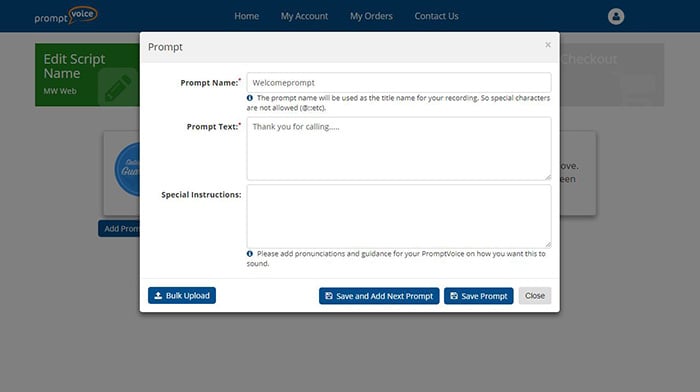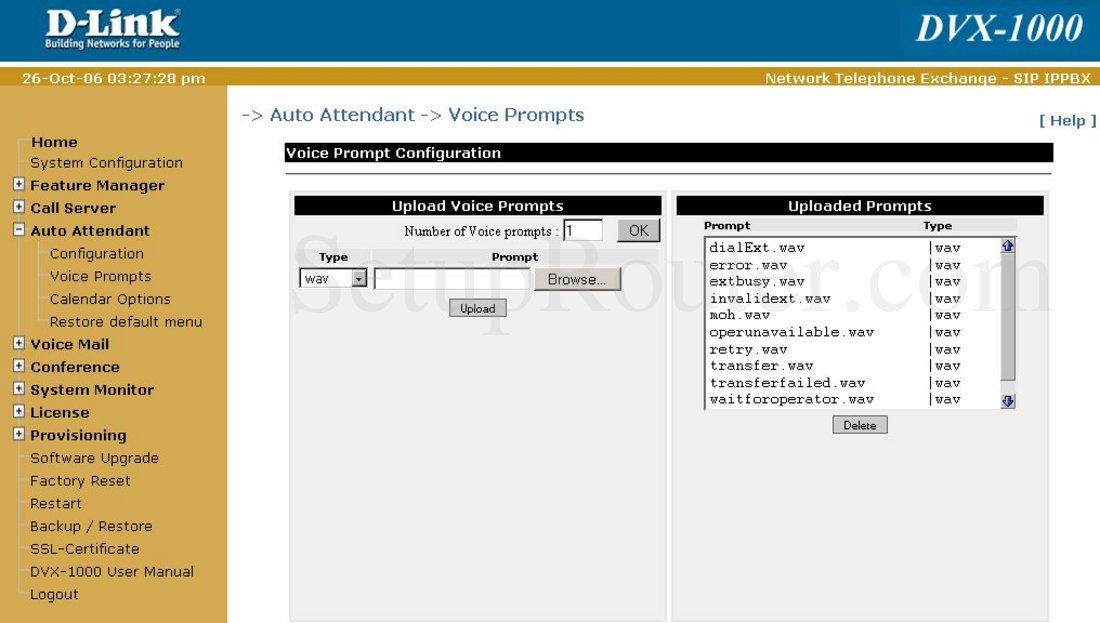To find out if your phone system is auto-attendant & voice prompt capable, or for more information, call the audio professionals at OnHold.com at 888-321-8477. Phone prompts are used in all types of telephony applications. Commonly called “Voice Recordings”, these scripted announcements help callers navigate options using their phones.
Voice Prompts are call treatment objects that may include a set of actions to be applied to a called party.
The Voice Prompts list shows the Voice Prompts that are in your environment. It is sorted in a hierarchy by Tenants, configuration units, sites, and folders. To view objects by a particular hierarchy, select the hierarchy type in the drop-down menu above the list.
Configuration Manager respects tenancy permission settings. You can access only those objects that you have been granted permissions and privileges to access.
You can filter the contents of this list in two ways:
- Type the name or partial name of an object in the Quick Filter field.
- Click the cube icon to open the Tenant Directory filter panel. In this panel, click theTenant that you want to select. Use the Quick Filter field in this panel to filter the Tenant list.
You can sort the items in the list by clicking a column head. Clicking a column head a second time reverses the sort order. You can add or remove columns by clicking Select Columns.
To select or de-select multiple objects at once, click Select.
To create a new Voice Prompt object, click New. To view or edit details of an existing object, click the name of the object, or click the check-box beside an object and click Edit.To delete one or more objects, click the check-box beside the object(s) in the list and click Delete. You can also delete individual objects by clicking on the object and then clicking Delete.Otherwise, click More to perform the following tasks:
- Clone—Copy a Voice Prompt.
- Move To—Move a Voice Prompt to another hierarchical structure.
- Enable or disable Voice Prompts.
- Create a folder, configuration unit, or site. See Object Hierarchy for more information.
Click the name of a Voice Prompt to view additional information about the object. You can also set options and permissions, and view dependencies.

Procedure: Creating Voice Prompt Objects

Steps

Voice Prompts Templates
- Click New.
- Enter the following information. For some fields, you can either enter the name of a value or click Browse to select a value from a list:
- Name—The name of the Voice Prompt. You must specify a value for this property, and that value must be unique within the Configuration Database (in an enterprise environment) or within the Tenant (in a multi-tenant environment). Once you set the value, you cannot change it. If the Voice Prompt is used for a parked-call treatment, this value must correspond to the voice prompt identifier that the switch provides.
- Description—A brief description of the Voice Prompt. For Text-to-Speech synthesis, a parking platform or a switch can use this property to generate the Voice Prompt.
- Switch—The Switch to which this Voice Prompt belongs. Once you set the value, you cannot change it.
- Script—A unique identifier of the Script for this Voice Prompt.
- Tenant—In a multi-tenant environment, the Tenant to which this object belongs. This value is automatically set to the Tenant that was specified in the Tenant Directory field in the object list.
- State Enabled—If selected, indicates that the object is in regular operating condition and can be used without any restrictions.
- Click Save.